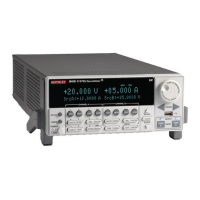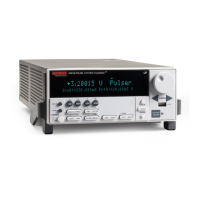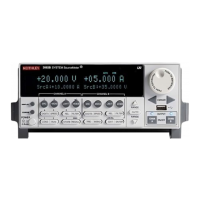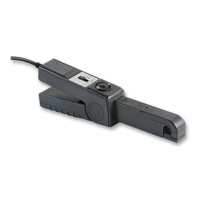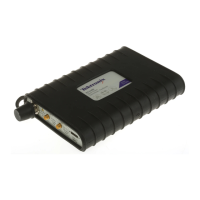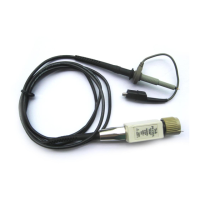High Voltage SourceMeter Instrument Reference Manual Section 12:
2470-901-01 Rev. A / May 2019 12-127
:TRACe:MAKE
This command creates a user-defined reading buffer.
Type Affected by Where saved Default value
Command only Recall settings
Instrument reset
Save settings Not applicable
Usage
:TRACe:MAKE "<bufferName>", <bufferSize>
:TRACe:MAKE "<bufferName>", <bufferSize>, <bufferStyle>
A user-supplied string that indicates the name of the buffer
A number that indicates the maximum number of readings that can be stored in
<bufferName>
; minimum is 10
The type of reading buffer to create:
Store readings with reduced accuracy (6.5 digits) with no formatting
information, 1 μs accurate timestamp, maximum approximately 20,000,000
readings: COMPact
Store readings with full accuracy with formatting, maximum approximately
5,000,000 readings: STANdard (default)
Store the same information as standard, plus additional information: FULL
Store external reading buffer data: WRITable
Store external reading buffer data with two reading values:
Details
You cannot assign user-defined reading buffers the name defbuffer1 or defbuffer2.
If you create a reading buffer that has the same name as an existing user-defined buffer, the event
message 1115, "Parameter error: TRACe:MAKE cannot take an existing reading buffer name" is
generated.
When you create a reading buffer, it becomes the active buffer. If you create two reading buffers, the
last one you create becomes the active buffer.
The default fill mode of a user-defined buffer is once. You can change it to continuous.
Once the buffer style is selected, it cannot be changed.
Once you store the first reading in a compact buffer, you cannot change certain measurement
settings, including range, display digits, and units; you must clear the buffer first.
Not all remote commands are compatible with the compact, writable, and full writable buffer styles.
Check the Details section of the command descriptions before using them with any of these buffer
styles.
Writable readings are used to bring external data into the instrument. You cannot assign them to
collect data from the instrument.
You can change the buffer capacity for an existing buffer through the front panel or by using the
:TRACe:POINts command.

